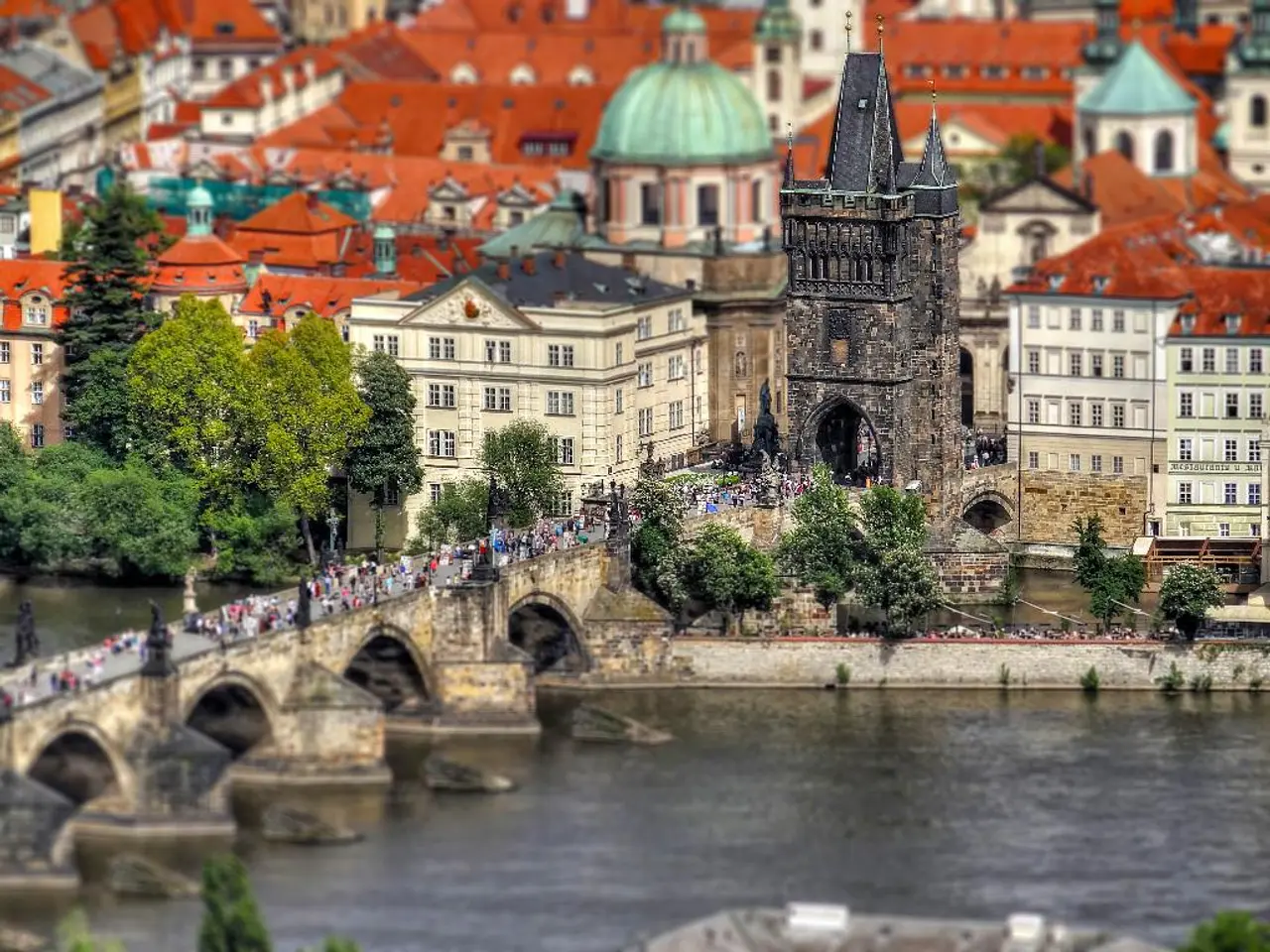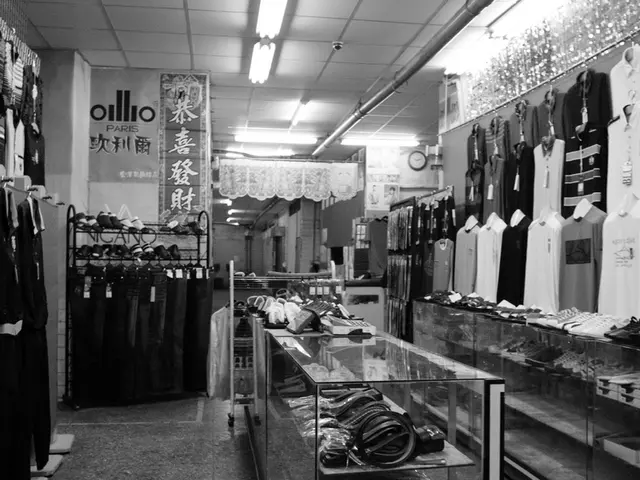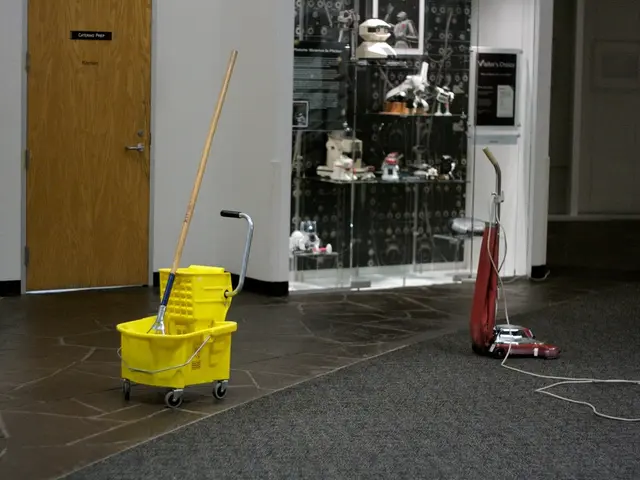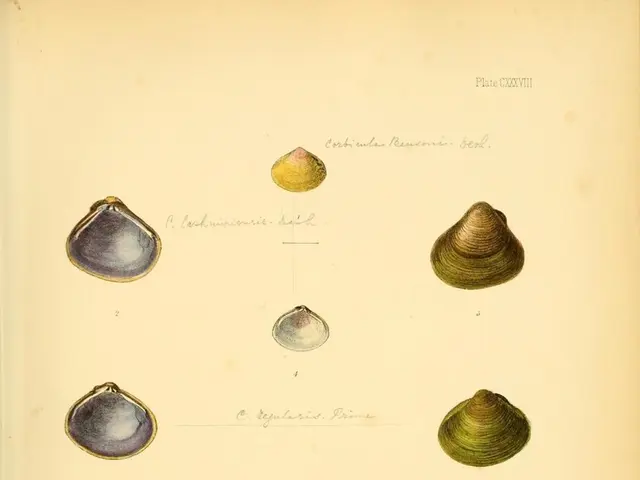A Comprehensive Overview of Windsor Castle's Past
Windsor Castle, the oldest and largest continuously occupied castle in the world, has been a testament to the evolution of the British monarchy for nearly a thousand years[1][4]. Located in Windsor, England, this historic fortress has served as a royal residence, military stronghold, and national symbol since its construction by William the Conqueror around 1070.
The castle's origins lie in its strategic location on the banks of the River Thames, at the edge of a Saxon hunting ground. Initially built as a motte and bailey castle, the wooden fortress was designed to protect the western approach to London and serve as a royal hunting lodge due to its proximity to Windsor Forest[1].
In the 12th century, Henry I became the first monarch to use Windsor Castle as a royal residence, establishing domestic quarters within its walls[1]. His successor, Henry II, began replacing the wooden structures with stone, constructing two sets of royal apartments and initiating the transformation from a military stronghold into a palace[1][4].
The castle underwent significant changes in the 13th and 14th centuries, with Henry III completing the south wall and the western end of the lower ward, and building a royal chapel on the site of the present Albert Memorial Chapel[3]. Edward III established the Order of the Garter and made the castle’s chapel its spiritual center, converting the upper ward’s fortress buildings into residential apartments for the monarch and the order’s members[3].
Throughout the centuries, Windsor Castle has witnessed numerous renovations, expansions, and restorations to reflect the ambitions, architectural trends, and historical events of its royal residents. Charles II, inspired by French architecture, rebuilt the state apartments and designed the 2.65-mile Long Walk, a tree-lined avenue leading to the castle[4]. The state apartments were further updated to reflect Georgian tastes in the 18th century, though the basic medieval structure remained.
Significant interior redesigns continued in the 19th century, but the castle retained its medieval footprint. Major restoration work was undertaken to repair and modernize the structure in the 1920s, including updates to the interiors and infrastructure[3]. A devastating fire caused extensive damage to the castle’s state apartments in 1992, but restoration was completed in 1997, returning the castle to its previous glory.
Today, Windsor Castle remains a working royal palace, administrative center, and official residence of the British monarch. It is open to the public as a major tourist attraction, while also hosting state occasions and official events[4]. The castle has been the site of several significant royal weddings, including Meghan Markle and Prince Harry's wedding in May 2018, Princess Beatrice and Jack Brooksbank's wedding in October 2018, Prince Edward's wedding to Sophie Rhys-Jones in 1999, and Prince Charles and Camilla Parker Bowles' civil ceremony in 2005.
Windsor Castle's history mirrors the story of England itself—military, political, and cultural changes all etched into its stones, from the Norman Conquest to the 21st century[1][3][4]. In 2025, Windsor Castle continues to be a symbol of continuity and tradition in the British monarchy, blending its medieval origins with the needs and tastes of contemporary royalty.
References: [1] https://www.historic-uk.com/HistoryUK/HistoryofEngland/Windsor-Castle/ [2] https://www.royal.uk/windsor-castle [3] https://www.britannica.com/topic/Windsor-Castle [4] https://www.windsorcastle.com/plan-your-visit/history
Windsor Castle, a symbol of tradition in the British monarchy, has been a reflection of evolving style and taste throughout the centuries. Its architectural evolution, from a motte and bailey castle to a palace, mirrors changes in society and culture. The royals have transformed the castle, with Charles II redesigning the state apartments in a French style and later renovations showcasing Georgian tastes. Throughout its history, Windsor Castle has been the venue for numerous weddings, including Meghan Markle and Prince Harry's union in 2018. Today, it continues to serve as a royal residence, administrative center, and tourist attraction, bridging the gap between its medieval origins and contemporary lifestyle. Simultaneously, it stands as a testament to home-and-garden aesthetics, exhibiting exquisite art and design within its walls. The castle, a living legacy of the British royals, demonstrates the entwining of news, entertainment, and the lifestyles of Windsor's most illustrious residents.




